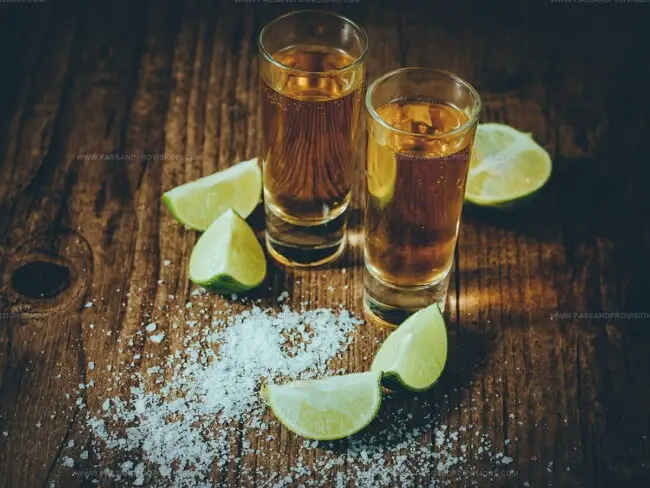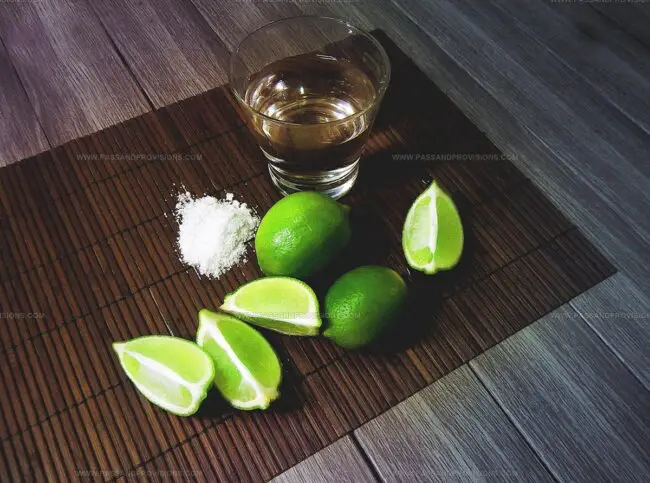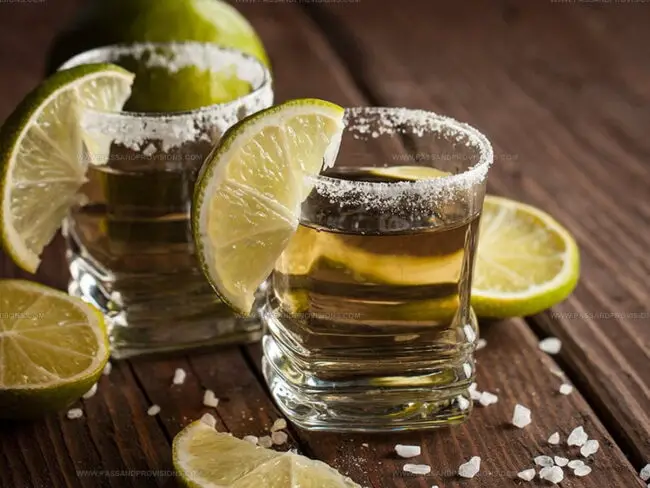What Does Tequila Taste Like? A Sip into Agave’s Liquid Soul
Tequila, the iconic Mexican spirit, sparks curiosity among many drink enthusiasts seeking to understand its unique flavor profile.
Crafted from blue agave plants in specific regions of Mexico, this beloved beverage carries a rich cultural heritage that extends far beyond simple alcohol consumption.
The complexity of tequila's taste remains a mystery to those who haven't experienced its nuanced characteristics.
Some people approach this spirit with hesitation, wondering about its potential flavor notes and sensory experience.
Misconceptions about tequila often stem from limited exposure or past experiences with lower-quality brands.
Each variety of tequila offers a distinctive sensory journey that surprises and delights those willing to learn.
Understanding the intricate flavor landscape of this remarkable spirit requires an open mind and adventurous palate.
Dive into the world of tequila and uncover the delightful secrets waiting to be savored.
What Is Tequila?
Mexico offers a special drink called tequila, made only from agave plants in specific regions.
People worldwide love this spirit, but it's most popular in Mexico and the United States.
Bars and parties often feature margaritas and tequila shots, but drink lovers have many other cocktail options to explore.
Tequila brings a unique taste that mixes sweetness and spice.
People get the drink's name from the agave plant that grows across Mexican regions.
Natural fermentation creates its signature sweet flavor.
Some tequila brands stand out more than others, with differences in taste and potential health perks.
Checking out tequila's nutrition can reveal interesting details about this special drink.
Flavor of Tequila
Tequila boasts a unique earthen taste with a powerful alcohol punch. No two tequilas taste exactly the same, since their flavor depends on agave growth location and production style.
Blanco tequilas showcase pure tequila notes - earthy, slightly sweet, and distinctly agave-focused.
Lowland tequilas lean toward fruity and deeper earth tones, while highland versions carry greener and sharper flavor profiles.
Barrel aging introduces oak-like qualities to the drink's overall character.
Sipping tequila can surprise you with its complex flavor range.
Each small taste might spark interest in another quick sip. Tequila works perfectly for celebrating big moments or evening adventures.
Good shots can boost confidence and set an exciting mood for social events. Matching tequila with grilled steak, spicy dishes, or fruity margaritas creates wonderful taste combinations.
Types of Tequila
Tequila comes in five main types, each with its own look, taste, and way of aging.
Knowing these styles helps you pick the right tequila for any drink or special moment.
Blanco (Silver or White) Tequila
This style is clear and pure, sometimes called silver or white tequila.
It spends little or no time aging, up to 60 days in stainless steel or oak tanks.
Blanco tequila is crisp, bright, and perfect for mixing in cocktails or enjoying as a shot.
It’s usually the most affordable option.
Joven (Gold) Tequila
Joven means “young” and blends white tequila with aged tequila.
It can also include caramel or other flavors to mellow the taste and add a golden color.
Some Joven tequilas are simple and budget-friendly, while others are surprisingly smooth.
Reposado Tequila
This type rests in oak barrels for at least two months, often up to nine.
The barrels soften sharp flavors, giving the tequila a light straw color and a touch of woodiness.
Makers often use old bourbon barrels for extra flavor.
Reposado is great for sipping or using in upscale cocktails.
Añejo Tequila
Aged for at least one year in oak or bourbon barrels, Añejo has a deeper color and a richer, smoother taste.
Most sit in barrels between 18 months and three years.
Expect notes of caramel, butterscotch, and balanced agave and oak.
Many people enjoy sipping Añejo on its own.
Extra-Añejo Tequila
This extra-aged style spends more than three years in barrels, creating bold, complex flavors like some of the world’s best whiskies.
Extra-Añejo is dark, luxurious, and perfect for slow sipping.
Why Agave Is Important in Tequila
Tequila comes from an amazing plant found in Mexico's mountain regions. Blue agave gives this drink its special taste with hints of sweetness, nuttiness, and sour notes.
Medical experts have long recognized tequila's surprising health perks. People have used this drink for centuries as a natural medicine that fights swelling and helps protect against certain illnesses.
During past health emergencies like Spanish Flu, doctors actually recommended tequila as a treatment.
Mexican farmers carefully grow blue agave in specific regions to create this famous drink.
Tequila carries more than just an interesting flavor - it also provides some health benefits. Small amounts of this beverage contain helpful nutrients that support overall wellness.
Each sip tells a story of traditional farming and careful craft passed down through generations of Mexican producers. People who try tequila often find its complex flavor profile both surprising and enjoyable.
Tequila vs. Vodka
Tequila and vodka are both popular spirits, but they stand apart in many ways, from their ingredients to their flavors and how people enjoy them:
Where They Come From
Tequila is tightly linked to Mexico, made only in certain regions using blue agave plants that need about eight years to grow.
Vodka can be made almost anywhere in the world, with water and distilled grains or potatoes as its main ingredients.
What They’re Made Of
True tequila uses 100% blue agave, giving it a unique, earthy flavor.
Vodka is made to be clean and neutral, showing off a clear appearance in the bottle and rarely carrying much taste or aroma.
Looks and Taste
Vodka is always transparent and crisp, with very little flavor, which makes it great for mixing in cocktails.
Tequila can taste earthy, herbal, or even sweet, depending on how it’s made and aged.
Health and Calories
Pure tequila (100% agave) has very low sugar and carb content, making it a lighter option if you’re watching those details.
Vodka is also low in sugar, but mixing with sugary drinks can add extra calories.
Tequila usually has fewer calories per shot than vodka, but the final calorie count depends on the brand and alcohol level.
In the Glass
Tequila is often sipped or used in drinks like margaritas, while vodka is a top pick for a wide range of cocktails.
Each spirit brings its own character and tradition to any drink.
Tequila vs. Mezcal
Tequila and mezcal are both Mexican spirits made from agave, but they have some key differences.
Tequila is made only from blue agave and mostly comes from the region around Tequila, Jalisco.
It usually has a smooth, clean flavor and is often used in cocktails like margaritas.
Mezcal, on the other hand, can be made from many types of agave and is mostly produced in Oaxaca.
Mezcal has a smoky taste because the agave is roasted in underground pits before being distilled.
While both drinks can be enjoyed straight or in cocktails, mezcal is known for its bold, earthy flavor.
If you want a lighter, crisper drink, choose tequila. If you like a rich, smoky taste, try mezcal.
Both have their own unique traditions and flavors, so it’s worth tasting each to see which you like best.
How to Drink Tequila
Here's how people enjoy tequila. Bottles of tequila can be drunk straight, and older tequilas have a stronger taste.
People in Spain like drinking tequila with sangrita, and some prefer it with salt and lemon. Drinking tequila shots without food might cause discomfort.
Aged tequilas often taste great when sipped directly or with ice. Blanco tequilas work well for shots, which people drink plain or with mixers.
Any tequila, especially Blancos and reposados, mixes nicely in cocktails.
Tequila works with many fruits, particularly citrus, and makes excellent spicy cocktails.
People also enjoy different tequila styles like:
Mexican and Tex-Mex meals pair wonderfully with tequila. Tequila cocktails add fun to summer parties and barbecues.



